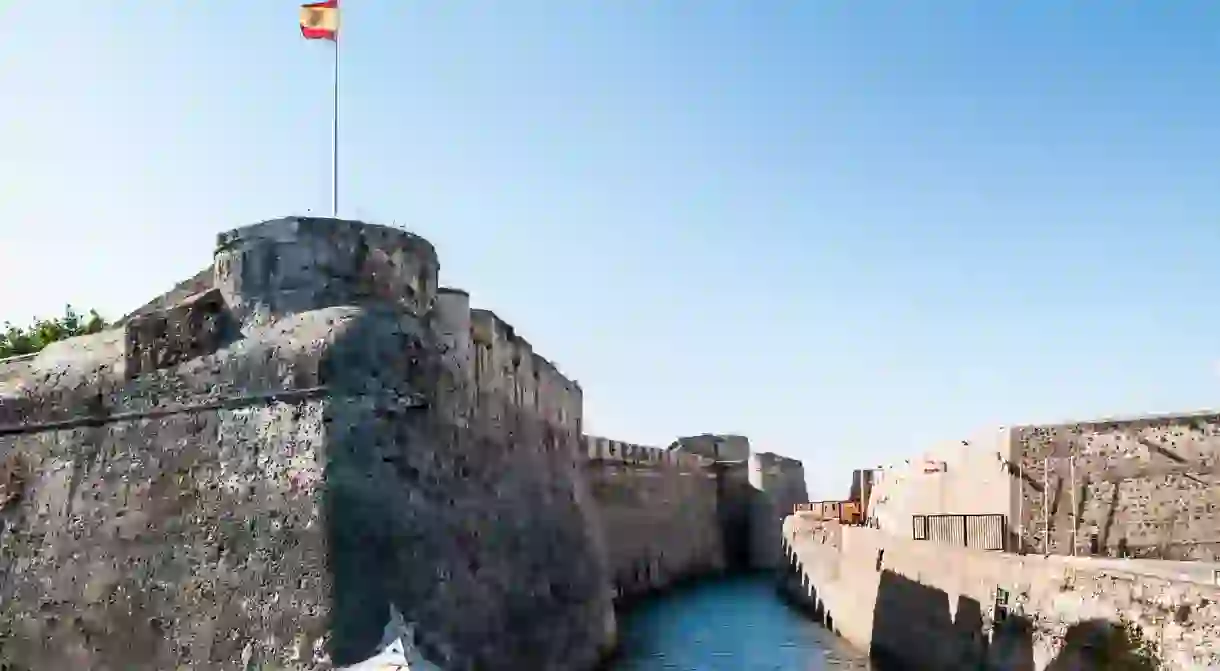The Best Things to Do in Ceuta, Spain

Located on the northwestern tip of Africa, the Spanish enclave of Ceuta lies across the Strait of Gibraltar from mainland Spain, and has historically provided a link between Africa and Europe. Visit the city to explore its 17th-century cathedral, preserved Arab baths and more.
From the Mirador San Antonio, from which Spain itself can be seen, to the Murallas Reales (Royal Walls), which jut out to sea, standing impressively over the edge of the city, Ceuta has some fantastic sights that are well worth checking out. Culture Trip has picked the best things to do on a trip to Ceuta.
Cathedral de la Asunción
Cathedral

Work commenced on Ceuta’s principal Catholic church in 1686, on a site once occupied by the city’s great mosque (of which nothing remains, sadly). But owing to the Great Siege of Ceuta (1694–1720), during which the structure was used as an army barracks, the cathedral wasn’t officially opened until 1726. Inside, key features include the Capillo del Santisimo’s Baroque altarpiece and a small museum housing religious artwork.
Casa de los Dragones
Historical Landmark

Keep your eyes pointed upward on a stroll around the centre of Ceuta, and you can’t miss the “Dragon House”. Built for the city’s (very lucky) mayor and his brother between 1900–1905, its stately and eclectic facade was originally topped by four bronze dragons, which looked as if they were ready to swoop down on pedestrians below. The fire-breathing four were dismounted and lost in the 1920s but were replaced by fibreglass versions in 2006.
Baños Arabes
Health Spa
Located just over the road from the Maritime Mediterranean Park are Ceuta’s impressively preserved Arab Baths. Constructed on the remains of 11th-century dwellings during the 12th and 13th centuries, they were a social hub for citizens of medieval Ceuta, who could relax and gossip in rooms maintaining “hot” or “cold” temperatures. While the baths are no longer in use, still with us are the beautiful domed ceilings and their star-shaped ventilation holes.
Murallas Reales
Historical Landmark

Ceuta’s formidable defensive walls have existed in one form or another since the fifth century. The muscular labyrinth we see today, though, dates largely from the 1540s, when the city’s Portuguese occupants also built a seawater moat and drawbridge to discourage attackers. Subsequently, the Murallas Reales (Royal Walls) were reinforced and rebuilt throughout the 17th and 18th centuries, especially after the Great Siege of Ceuta finally ended in 1720.
Museo de los Murallas Reales
Historical Landmark
Art lovers visiting Ceuta will want to check out the Museo de los Murallas Reales, a stunning contemporary space carved into the centuries-old fortifications. Since 1999, this has been the historical setting for the city’s fine-arts collection as well as temporary exhibitions of works by local and international artists.
Mirador San Antonio
Historical Landmark

To feast your eyes on a couple of continents at once, head to the spectacularly appointed Mirador San Antonio. Found at the top of Monte Hacho, this small square not only offers a great view of Ceuta itself, it also provides unforgettable perspectives on Morocco’s dramatic coastline and the dark hulk of Gibraltar’s eponymous rock, directly across the Strait of Gibraltar.
Plaza de África
Architectural Landmark

Located just a 10-minute walk from the port, Plaza de África provides a great introduction to Ceuta if you’re arriving by boat. As well as being surrounded by impressive architecture, its ambience is an intriguing blend of Moroccan and Andalusian elements. The memorial at its centre remembers soldiers who died in the Spanish-Moroccan territorial conflict of 1859–60.
Ceuta Central Market
Food Court, Spanish

To take the pulse of Ceuta’s street life, head to the central food market on Plaza de la Constitución. Like any Spanish mercado, it’s a noisy concentration of local activity, with stalls selling fresh meat and fish, spices and herbs, flowers, fruit and vegetables. There are also several no-frills bars inside, providing perfect spots to grab churros and chocolate or a caña (small beer) while you watch market life unfold.
Parque Marítimo del Mediterráneo
Historical Landmark

For an unbeatable summer afternoon in Ceuta, head to the Parque Marítimo del Mediterráneo. A hedonist’s playground on the seafront, it offers three saltwater swimming pools, a plethora of tapas bars, several restaurants serving a variety of international cuisine and palm-fringed sunbathing areas. This beautiful space is the work of architect César Manrique and is modelled on his famous Lago Martiánez in Tenerife.
Museo de la Legión
Museum
This museum’s subject is the Legión Española – a division of the Spanish Army founded in 1920, primarily to fight Spain’s territorial battles in North Africa. The permanent collection is spread over four rooms, displaying weaponry, uniforms, photographs and fascinating explanatory panels. There’s also a portrait of the Legión’s founder, José Milián Astray, a wild, eccentric soldier who lost both his right eye and left arm in action.













